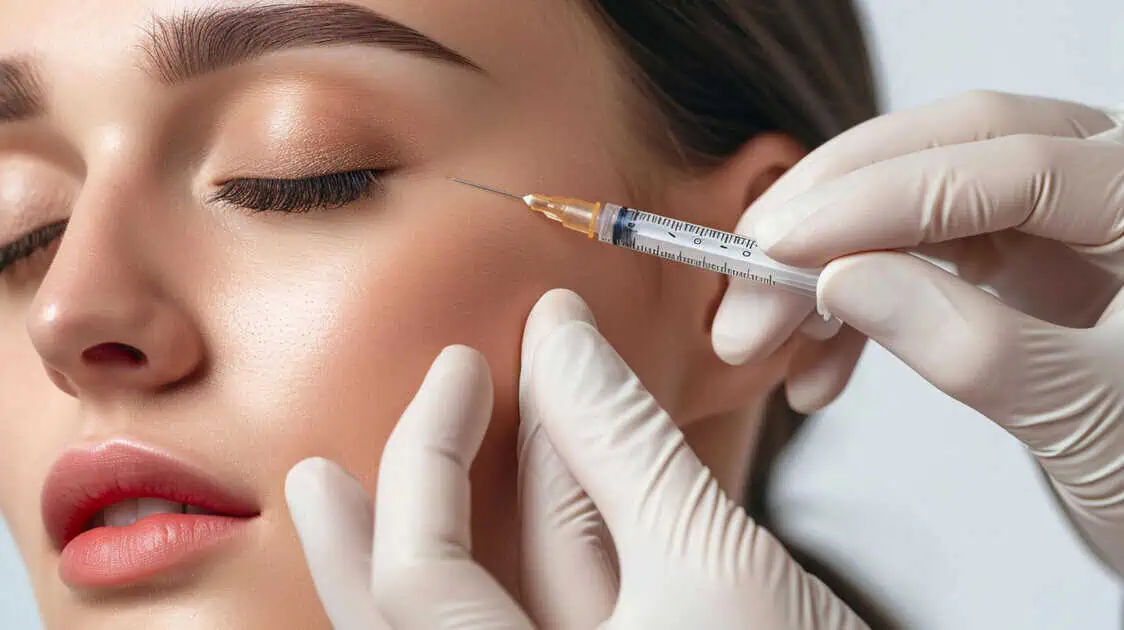Table of Contents
Chemical peels involve applying a chemical solution to the skin to remove the outer layers. This controlled shedding can address various skin concerns, such as uneven texture, fine lines, hyperpigmentation, and acne. However, individuals with sensitive skin may have reservations about undergoing this procedure due to potential irritation or adverse reactions. Before considering a chemical peel, it is essential to consider the specific needs and limitations of sensitive skin and explore appropriate options.
Chemical Peels Overview
Chemical peels are aesthetic options that involve applying a chemical solution to the skin’s surface. This controlled application induces shedding of the outer layers of the skin, revealing newer, fresher skin underneath.
Peels can manage various concerns, such as uneven texture, fine lines and wrinkles, hyperpigmentation, acne, and scarring, by removing the damaged outer layers. The chemical solutions used in these peels work by breaking down the bonds that hold the dead skin cells together, allowing for exfoliation and promoting cell renewal. The depth of penetration and intensity of the peel directly correlate with the potential for visible results and the risk of side effects and downtime required for recovery.
Chemical peels create a controlled injury to the skin, which triggers the body’s natural healing process. This facilitates the synthesis of new collagen and elastin cells, enriching the skin’s overall appearance, texture, and tone.
Sensitive Skin and Chemical Peels
Sensitive skin and chemical peels can be tricky, requiring extra precautions and considerations. Chemical peels, by their very nature, involve the application of potent chemical solutions that cause controlled exfoliation and shedding of the skin’s outer layers. This process can aggravate sensitive skin types, leading to adverse reactions such as excessive redness, swelling, burning sensations, or even peeling beyond the intended levels.
Not all chemical peels are created similarly, and those with sensitive skin may better tolerate some than others. Gentler peels, such as those containing lactic acid or lower concentrations of glycolic acid, are more suitable options as they are less irritating.
Regardless of the peel chosen, individuals with sensitive skin should exercise caution and seek professional guidance before undergoing any chemical peel treatment. A professional assessment is necessary to determine your skin’s tolerance, determine the appropriate peel strength, and develop a personalized treatment plan.
Types of Chemical Peels for Sensitive Skin
When considering chemical peels for sensitive skin exfoliation, it’s essential to understand the differences between various types and how they might affect sensitive skin types. Here’s what we recommend:
The Perfect Derma Peel
This peel is designed to manage various skin concerns, such as fine lines, wrinkles, sun damage, and pigmentation issues, by exfoliating the outer layer of the skin. It’s generally considered suitable for various skin types, including sensitive skin, because it aims to reveal a smoother, more radiant complexion with relatively quick results. The active ingredients typically include a mix of acids and other components that promote skin health. Still, those with sensitive skin should ensure the formulation is not too harsh for their skin barrier.
Recommendations for Sensitive Skin
For those with sensitive skin, choosing the right chemical peel involves several considerations:
- Ingredient Tolerance: Check for known irritants or allergens in the peel’s ingredients list. Ingredients like salicylic acid may be harsher on sensitive skin, whereas lactic acid is typically milder and can be more suitable.
- Peel Strength and Depth: Light or superficial peels may be more appropriate for sensitive skin as they cause less skin barrier disruption.
- Professional Guidance: Always consult with a professional before deciding on a chemical peel. Our providers ensure tailored advice based on your skin’s specific needs and sensitivities.
Points to Consider When Choosing a Peel
- Avoid Strong Acids: Options like TCA (trichloroacetic acid) or high concentrations of glycolic acid might be too harsh for sensitive skin types. Instead, look for peels with milder acids like lactic or mandelic acid.
- Check for Additives: Avoid peels that contain unnecessary fragrances or botanicals that could irritate sensitive skin. Instead, opt for peels with fewer and simpler ingredients.
Chemical Peels Before and After Treatment. Care
Before applying any peel, prep your skin with a gentle cleanser and follow up with a hydrating moisturizer to protect your skin barrier. Aftercare for sensitive skin after a chemical peel, apply broad-spectrum sunscreen, as your skin will be more sensitive to UV exposure.
Starting with a mild, lactic acid-based peel or an enzymatic peel can be safer for minimizing chemical peel irritation. Always conduct a patch test before applying a new peel to your entire face, and consider consulting a dermatologist to help choose the product that best suits your skin’s needs.
Chemical Peel Procedure: What To Expect
Before the peel application, your skin will undergo a thorough cleansing process to remove any residual makeup, oils, or impurities that could interfere with the chemical solution’s effectiveness. Depending on the peel’s intensity, you may also receive a protective barrier cream applied around the delicate areas like the eyes, nostrils, and lips.
Once your skin is prepared correctly, the chemical solution will be carefully applied to the treatment areas, typically using a brush, cotton applicator, or gauze. The solution may cause a mild stinging or tingling sensation, which is normal and typically subsides within a few minutes.
The duration of the peel application varies depending on the specific formulation and the desired level of exfoliation. Lighter peels may only require a few minutes of contact time, while deeper peels may necessitate more prolonged exposure.
Following the peel application, your skin may appear slightly red or flushed, similar to a mild sunburn. In the days following the peel, your skin may experience some degree of peeling or flaking as the outer layers shed away. This is a natural process and should occur without forceful removal or picking.
Takeaway
If you’re considering a chemical peel but have concerns about sensitive skin, don’t let that hold you back. At Body Revolution Aesthetics & Wellness, our highly trained professionals are dedicated to providing personalized solutions that prioritize your skin’s unique needs.
We understand the delicate nature of sensitive skin and take a thoughtful, customized approach to chemical peels. Book a comprehensive assessment with one of our knowledgeable providers today. During this one-on-one session, we’ll carefully evaluate your skin, discuss your concerns, and develop a customized treatment plan designed to deliver visible results while minimizing the risk of irritation or adverse reactions.



